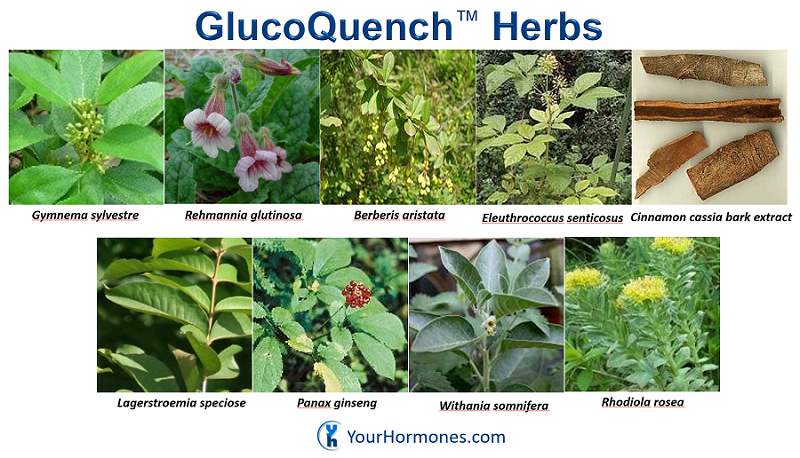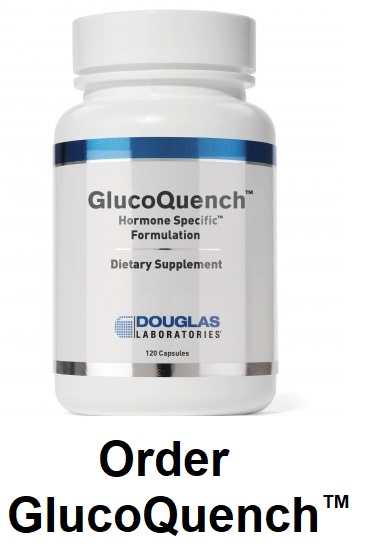
Gymnema sylvestre leaf extract, standardized to 25% gymnemic acids. The gymnemic acid from from Gymnema sylvestre , has anti-obesity and antidiabetic properties, decreases body weight and inhibits glucose absorption. Several components extracted from Gymnema prevent the accumulation of triglycerides in muscle and liver, and decrease fatty acid accumulation in the circulation.
There are several mechanisms involved in the ability of Gymnema sylvestre to lower blood sugar, and decrease the development of diabetes. The phytochemicals extracted from Gymnema sylvestre may inhibiting glucose uptake in the gastrointestinal tract by inhibition of sodium-dependent glucose transporter 1 (SGLT1 inhibition). Some of the compounds in Gymnema sylestre have been identified as insulin receptor agonists (IR agonists).
Gymnema sylestre appears to enhance endogenous insulin, possibly by regeneration/revitalisation of the residual beta cells in insulin-dependent diabetes mellitus. Insulin requirements came down together with fasting blood glucose and glycosylated haemoglobin (HbA1c) and glycosylated plasma protein levels. The beta cells of the pancreas may be regenerated/repaired in Type 2 diabetic patients, supported by the appearance of raised insulin levels in the serum of patients.
Supplementation with Gymnema sylvestre reduced excessive eating, fatigue, blood glucose (fasting and post-prandial), and glycated hemoglobin and there was a favourable shift in lipid profiles and in other clinical-biochemical tests. These findings suggest a beneficial effect of Gymnema sylvestre in the support of blood sugar health.
Gymnema sylvestre can restore beta cells in the islets of Langerhans. In addition, glycosylation of proteins, a major metabolic abnormality in diabetes mellitus, and the resultant nephropathy, retinopathy and micro and macroangiopathy, may be brought under control by the use of Gymnema sylvestre.
In addition to antihyperglycemic affects, Gymnema sylvestre, neuroprotective properties of Gymnema sylvestre may be associated with the inhibition of the high glucose mediated excessive activation of inflammatory molecules and oxidative stress mediators. Gymnema sylvestre has also been shown to decrease blood pressure in a few studies.
Rehmannia glutinosa can decrease insulin resistance by increasing glucose utilization and lowering glucose and cortisol levels.Mice treated with Rehmannia glutinosa showed reduced blood glucose levels after stimulating the plasma GLP-1 levels. Research supports the weight-controlling effects of Rehmannia glutinosa treatments, showing reducing levels of (the “hunger hormone’ and the induction of peptide YY (PYY) secretion.
Additional research showed that Rehmannia glutinosa use for 5 weeks improved impaired glucose tolerance, increased liver and muscle glycogen. decreased the gluconeogenesis, and decreased plasma-free fatty acid's level, plasma triglyceride, total cholesterol levels and corticosterone level, while increasing plasma leptin (the “satiety hormone”).
Catalpol, a bioactive component from the root of Rehmannia glutinosa, has been shown to have antidiabetic effects in type 2 diabetic animal models. This may be due to the ability of catalpol to ameliorate high fat diet induced insulin resistance by decreasing adipose tissue inflammation and suppressing the JNK and NF-κB pathways.
Catalpol may also have beneficial effects against diabetic nephropathy by limiting the expression of TGF-β1, CTGF and Ang II and reducing the extracellular matrix accumulation.
Berberine HCL from Berberis aristata root extract. Berberine is a naturally occurring alkaloid and a primary constituent of several plants including Indian barberry, goldenseal, and phellodendron. Patients with type 2 diabetes and dyslipidemia showed a decrease in fasting and postload plasma glucose, HbA1c, triglyceride, total cholesterol and low-density lipoprotein-cholesterol when administered berberine for 3 months.Berberine has well documented antidiabetic properties, with the ability to decrease insulin resistance by its action as an insulin receptor agonist, and due to anti-inflammatory properties. It can also inhibit alpha-glucosidase and decrease glucose transport through the intestinal epithelium.
Berberine also demonstrated the ability to normalize lipid profiles, with TC, and LDL-C all decreasing, and HDL-C increasing in human trials.
In women with PCOS, Berberine has a more pronounced therapeutic effect and achieved more live births with fewer side effects than metformin.
In animal trials, berberine improved nonalcoholic fatty liver disease (NAFLD) by regulating lipid metabolism by the inhibition of glucogenesis and hepatic lipogenesis. The researchers concluded that berberine might be a good choice for patients with NAFLD and glucose metabolic disorders.
Berberine can decrease the risk do diabetic nephropathy, can be a therapy against diabetic retinopathy, and may also have a has protective effect for diabetes through beta cell regeneration.
Its action as an aldose reductase inhibitor allows berberine to effectively prevent and delay diabetic complication, such as diabetic nephropathy, vasculopathy, retinopathy and peripheral neuropathy, and so on.
Research has also shown that berberine might control both hyperglycemia and blood pressure in diabetes. This is important because hyperglycemia and hypertension are considered to be the two leading risk factors for vascular disease in diabetic patients. Berberine may also be an effective therapeutic strategy for the treatment of obesity.
The cardiovascular properties of berberine include positive inotropic, negative chronotropic, antiarrhythmic, and vasodilator properties.
Berberine also has aldose reductase inhibition properties.
Eleuthrococcus senticosus root, standardized to 0.8% eleutherosides, Eleutherococcus senticosus extracts increased the insulin-provoked glucose uptake, improved serum lipid profiles and significantly decreased blood glucose and serum insulin levels. Supplementation effectively attenuated Homeostatic Model Assessment of Insulin Resistance (HOMA-IR), and improved hepatic glucose metabolism by upregulating glycolysis and downregulating gluconeogenesis.
It was found to reduce body weight and insulin resistance in high fat diet-induced hyperglycemic and hyperlipidemic mice. Gene expression studies confirmed reductions in glucose 6-phosphatase and lipogenic enzymes in the liver. These results demonstrate that the extract is an effective treatment for insulin resistance and hepatic steatosis in type 2 diabetic mice by decreasing hepatic lipid synthesis. An increase in insulin sensitivity following the administration of this herb was further identified.
Mechanisms of action may include the ability of Eleutherococcus senticosus to significantly inhibit α-glucosidase activity in the small intestine mucosa, which decreases postprandial hyperglycemia and may help prevent type II diabetes mellitus. Active constituents in this herb enhance glucose utilization as well as glycogen synthesis, which can lower plasma glucose levels.
Eleutherococcus senticosus may also raise the release of ACh from nerve terminals, which in turn to stimulate muscarinic M3 receptors in pancreatic cells and augment the insulin release to result in plasma glucose lowering action. It also has the ability enhance the secretion of beta-endorphin from adrenal medulla to stimulate peripheral micro-opioid receptors resulting in a decrease of plasma glucose in diabetic rats lacking insulin. Animal studies show that Eleutherococcus senticosus extract improved hepatic glucose metabolism by upregulating glycolysis and downregulating gluconeogenesis.
Eleuthrococcus can decrease stress response rise in cortisol. It may also provide a protective effect against the development ot diabetic nephropathy.
Eleutherococcus senticosus has many studies demonstration anti-inflammatory and antioxidant properties.
Cinnamon cassia bark extract. Cinnamon extract is an insulin sensitizer, protects mesangial cells, decreases inflammatory markers, and lowers glucose, lipids, and blood pressure in patients with type 2 diabetes.
GlucoQuench™ contains cinnamon type-A polymers isolated from water soluble extracts of cinnamon. This extract has been shown to be effective in reducing fasting blood sugar, and improving body composition in men and women with the metabolic syndrome, suggesting that this naturally-occurring spice can reduce risk factors associated with diabetes and cardiovascular diseases.
In a recent study the active ingredient caused a significant decrease in fasting blood sugar when compared to the placebo group. The participants subjects also showed statistically lower body fat, enhanced lean body mass, lower systolic blood pressure and saw improvements in various antioxidant measures. Cinnamon extract significantly reduced hemoglobin A(1c) and fasting blood glucose levels, and blood triglyceride levels in patients.
Patients given cinnamon showed significant decreases in fasting glucose, triglycerides and cholesterol. One study indicated that cinnamon may be a strong potentiator of insulin. Another study showed the extract to be an effective mimetic of insulin, that works synergistically with insulin (receptor agonsist). In addition to potentiating the action of insulin action and being beneficial in the control of glucose intolerance and diabetes, the polyphenolic polymers found in cinnamon may alos function as antioxidants.
Cinnamon polyphenols has been shown to protect in repair beta cells in one study. Cinnamon extract may also help decrease development of diabetic neuropathy. The water-soluble extract of Cinnamomum cassia can also inhibit development of diabetic nephropathy by preventing the over secretion of IL-6, collagen IV and fibronectin caused by high -glucose.
Lagerstroemia speciose (banaba leaf extract),standardized to 18% corosolic acid.
Lagerstroemia speciose (banaba), extracts have been used for many years in traditional medicine. The hypoglycemic effects of banaba have been attributed to both corosolic acid as well as ellagitannins.
Lagerstroemia speciosa standardized to corosolic acid for two weeks caused a significant reduction in the blood glucose levels in people with Type II diabetics.
Lagerstroemia speciosa has insulin-like actions by a mechanism different that the mechanism of insulin, and may be considered an insulin mimetic.
Several studies report that Lagerstroemia speciose can be useful for the prevention and treatment of obesity.
In oral glucose tolerance test, humans given corosolic acid showed lower glucose levels.
The beneficial effects of banaba and corosolic acid with respect to various aspects of glucose and lipid metabolism appear to involve multiple mechanisms, including enhanced cellular uptake of glucose, impaired hydrolysis of sucrose and starches, decreased gluconeogenesis and the regulation of lipid metabolism. These effects may be mediated by PPAR, MAP K, NF-κB and other signal transduction factors. Lagerstroemia speciose, and the active constituent corosolic acid, have been shown to decrease insulin resistance. Another study found hemoglobin A1C was found to be suppressed.
Lagerstroemia speciose has also been shown to decrease development of Nonalcoholic steatohepatitis (NASH), a liver disease associated with metabolic syndrome.
One study suggests that Lagerstroemia speciose may protect beta cells due to antioxidant actions. Lagerstroemia speciosa also has aldose reductase inhibition properties.
Panax ginseng root extract, standardized to 3% ginsenosides. In patients with type-2 diabetes or impaired glucose tolerance Ginseng supplementation improved fasting glucose, postprandial insulin, and Homeostatic Model Assessment of Insulin Resistance (HOMA-IR). Panax ginseng has the ability to reduce blood glucose levels and protect pancreatic beta-cells through antioxidant and by inhibiting death of beta cells caused by high glucose and cytokines. The immunomodulatory effects of Panax ginseng may even decrease the incidence of type 1 (autoimmune) diabetes.
Panax ginseng can decrease triglycerides, cholesterol levels, and has antiobesity properties. Panax ginseng has additional favourable effect on patients with metabolic syndrome including decreasing blood pressure cortisol levels, and causing a reduction of HgbA1c.
Panax can also decrease the risk of diabetic retinopathy, possibly due to increased the activities of total superoxide dismutase (SOD), MnSOD, catalase (CAT), and glutathione peroxidase (GSH-PX), as well as other mechanisms.
Withania somnifera(Ashwagandha) root and leaf extract, standardized to a minimum of 10% withanolide glycoside conjugates and 32% oligosaccharides.
Withania somnifera has the ability to promote normal glucose levels and protect pancreatic beta-cells.
In animal models, treatment with Withania somnifera significantly inhibited fructose-induced increases in glucose, insulin, HOMA-R, IL-6, and TNF-α. Additional research has shown Withania can reduce elevated levels of blood glucose, HbA(1)c and insulin and to significantly improve glucose tolerance test results. Withania somnifera has been shown to decrease insulin resistance in a number of studies.
In addition to the significant decrease in blood glucose, Withania somnifera may protect pancreatic beta-cells from oxidative damage through a significant reduction in lipid peroxidase tissue levels, an increase in glutathione levels and an increase in the activities of the antioxidant enzymes GPx, GR, GST, SOD and CAT.
Withania somnifera can also decrease triglycerides & cholesterol levels, and can be effective against obesity due to various properties including nootropic, stress adaptation, adipogenesis inhibition and anti-hyperlipidemic actions.
Rhodiola rosea root extract, standardized to 5% rosavins and 2% salidrosides. Rhodiola rosea has hypoglycemic activity and is protective against diabetes-induced oxidative stress and elevated blood sugar, with an ability to also increase in serum insulin levels, provide pancreatic beta-cell-protection, and increase SOD, GPx and CAT activities. Salidroside, a phenylethanoid glycoside isolated from Rhodiola rosea, may be beneficial in diabetic nephropathy due to its proteinuria-alleviating effects.Salidroside treatment significantly improved glucose and insulin tolerance. The euglycemic effects of salidroside may due to repression of adipogenesis and inflammation adipose tissue and stimulation of leptin signal transduction in hypothalamus.
Some studies have also shown that Rhodiola rosea may be beneficial in the treatment of obesity and hyperlipidemia.Rhodiola can also significantly decrease stress response rise in cortisol.
Back to About GlucoQuench™

